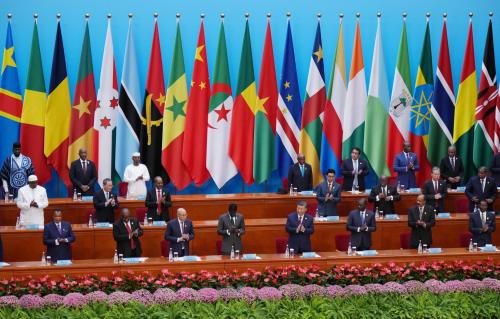In policy circles, lack of transparency has frequently been blamed for the recent financial crises in emerging markets. For example, the IMF (2001) notes that a “lack of transparency was a feature of the buildup to the Mexican crisis of 1994-95 and of the emerging market crises of 1997-98,” stating that “inadequate economic data, hidden weaknesses in financial systems, and a lack of clarity about government policies and policy formulation contributed to a loss of confidence that ultimately threatened to undermine global stability.” Consequently, the international financial institutions have actively promoted more transparency among their member countries as well as made strides to become more transparent in their own operations.
The strive for more transparency presupposes that destabilizing behavior by individual investors can be avoided or attenuated by improved provision of information. For example, international investment funds may be more likely to engage in herding in less transparent countries (where herding is defined as funds taking investment decisions which they would not take if they did not observe other funds taking them). As a result, investors may rush in and out of countries even in the absence of substantial news about fundamentals.
As far as we know, there has been no systematic examination on the relationship between transparency, especially the transparency of government policies, on the pattern of international investment. The objective of this paper is to provide an evaluation of this relationship. Specifically, we will first document whether transparency of a country has any effect on the level of international investment. We will then examine whether transparency affects the herding tendency of international investment funds.
Transparency could affect the level of international portfolio investment. In the corporate finance context, Diamond and Verrechia (1991), among others, have argued that a reduction in informational asymmetry can increase the investment from large investors and hence reduce the cost of capital for the firm (see Healy and Palepu, 2001, and Core, 2001, for reviews of the empirical literature on corporate disclosure). So far, there is no theoretical paper that has modeled explicitly the effect of a country’s transparency on the level of international portfolio investment. However, it seems reasonable to extrapolate from the corporate finance literature that an improvement in a country’s transparency can be expected to lead to an increase in the level of investment by international mutual funds.
In terms of the effect of transparency on herding behavior, the relationship in theory is more complex. On the one hand, one set of theoretical explanations of herding behavior relies on asymmetric information (e.g., Bikhchandani et al., 1992; Banerjee, 1992; Devenow and Welch, 1996; Bikhchandani and Sharma, 2000). We would note that there is a natural linkage between low transparency and asymmetry of information. Low transparency typically does not mean that no one knows anything. Rather, lower transparency means that less information is made publicly available, which in turn implies that the gap between those who know and those who do not becomes larger. Such higher informational asymmetry should therefore result in more herding.
On the other hand, herding by institutional investors can be rationalized without an appeal to informational asymmetry at all, but instead by the incentives faced by fund managers that result from the need to have their performances compared periodically with a common benchmark (Scharfstein and Stein, 1990; and Chevalier and Ellison, 1999). In this case, an improvement in a country’s transparency would not imply a reduction in international investors’ herding behavior.
Related to this discussion, the theoretical link between availability of information and market volatility is ambiguous, as pointed out, among others, by Furman and Stiglitz (1998). While their argument is not specifically about herding behavior, it is about investors’ trading behavior in different information environments. In particular, they suggest that if more transparency means a higher frequency of information release (holding the true value of the fundamental constant), price volatility could increase rather than decline. The notion that transparency may not necessarily reduce volatility is reflected in the recent literature on corporate transparency. In particular, Bushee and Noe (2000) report a positive association between corporate transparency and the volatility of the firm’s stock price. Firms with higher levels of disclosure tend to attract certain types of institutional investors which use aggressive, short-term trading strategies which in turn can raise the volatility of the firm’s stock price. It is not clear whether this investor self-selection story can be generalized to international context. Ultimately, the effect of transparency on the behavior of international investors is an empirical question.
International evidence on this question, however, is still lacking. To be sure, there are several empirical studies that measure the degree of herding among funds, including Lakonishok, Shleifer and Vishny (1992), Grinblatt, Titman and Wermers (1995), and Wermers (1999) for the U.S., Choe, Kho and Stulz (1999) and Kim and Wei (2002) for Korea, and Borensztein and Gelos (forthcoming) for emerging markets worldwide. However, as far as we know, there is no paper that studies the connection between a country’s level of transparency and the degree of herding by international investors.
We aim to accomplish two main objectives in this paper. First, we investigate the effect of transparency in developing countries on the level of investment by international institutional investors. Second, we examine the effect of transparency on the degree of herding among funds (as well as related issues). Apart from the novelty of the questions examined, two important features of the paper are the construction of transparency measures and the use of a unique micro investment data set containing the country allocation of over 300 emerging market funds at a monthly frequency over 1996-2000. The investment information at the individual fund level allows us to measure herding behavior, which is not possible with aggregate data.
We distinguish between government and corporate transparency. Within the category of government transparency, we further differentiate between macroeconomic data availability (timeliness and frequency) and transparency in the conduct of macroeconomic policies. Corporate transparency refers to availability of financial and other business information about firms in a country on average. It turns out that each measure contains information not captured by the other ones. For example, the correlation between corporate transparency and government data transparency is 0.02, and the correlation between corporate and government macropolicy transparency is 0.54.
The main findings of the paper can be summarized here. First, there is relatively clear evidence that low transparency—or high opacity—tends to depress the level of international investment. Government opacity and corporate opacity have separate, depressing effects on investment. Second, there is a moderate amount of evidence that low transparency in a developing country leads to an increase in the herding behavior by international investors. Thus, if herding by international investors contributes to a higher volatility or more frequent financial crises in emerging markets, it is not unrelated to the transparency features of the countries. Third, funds seem to react less strongly to news about country fundamentals in less transparent countries. Fourth, there is some evidence that during crises, funds flee non-transparent countries and invest in more transparent ones.
The Brookings Institution is committed to quality, independence, and impact.
We are supported by a diverse array of funders. In line with our values and policies, each Brookings publication represents the sole views of its author(s).



